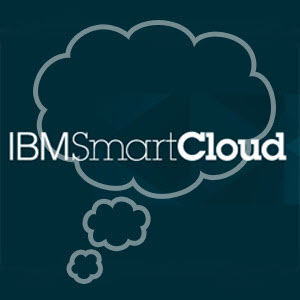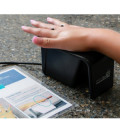Fiber networks and cloud changing healthcare IT
Fiber networks and cloud computing and changing Healthcare IT.
Lafayette boasts a high-speed fiber optic network, LUS Fiber, which gives it an edge over many other small cities. The network’s bandwidth and reliability allow businesses to deliver healthcare in new and better ways, the presenters said.
Combined with the cloud-based data center services, broadband also is changing up the data center market, as more companies shift to a utility model for data center needs. Whether data center technology providers are nimble enough to adapt to these changes remains to be seen, but first, here’s a few highlights of what some of the presenters had to say:
- Doug Menefee, CIO of Schumacher Group, an emergency and hospital services management company based in Lafayette, said high-speed fiber connectivity has allowed the company to reliably use Amazon’s cloud-based data center services to store much of its data, and also provide high-speed connectivity to 300 different partner sites.
One fiber connection running at 1 gigabytes per second (Gbps) connects to Amazon’s infrastructure, while another 1 Gbps pipe is reserved for communication with partner sites. The company still runs a couple of data centers, he said, but is transitioning these to the cloud, allowing its IT people to “spend less time in the data center environment.”
- Joey Branton, director of technology for Acadian Ambulance Service, a Lafayette-based ambulance service with 4,000 employees, is committed to running its own data centers. Branton said that it uses high-speed fiber connectivity to ensure a high level of redundancy between its data centers, which includes one facility in Chicago and one in Louisiana. Branton described ambulance dispatch and its other systems as “heartbeat operations” that need absolute reliability, using fast connectivity to mirror systems and data so that when the rare but inevitable failures do occur, a system can “fail successfully.”
- Allen Aubert, a registered nurse and neuroscience educator with Our Lady of Lourdes Regional Medical Center in Lafayette, demoed the technology used for its “Telestroke” program. Telestroke allows rural hospitals in the region who have stroke victim coming into their emergency rooms virtually consult with a neurologist. The partner hospitals each have a robot equipped with high-definition cameras and a display screen to give the Lafayette-based neurologist on call a “remote presence” at the emergency room. The neurologist can see and talk with the patient, interact with the emergency room doctor and staff, and can maneuver the robot for a better view.
The real-world examples from the health care industry point to how companies are approaching technology today. Instead of thinking of technology as something you install in a data center to run backend systems, the focus is on how technology assets can enable entirely new processes or improve existing ones.
The pessimistic view for someone involved in data center solutions is that this shift diminishes the market, since it becomes less essential for companies to run data centers. Yes, in one sense, cloud-based data center services as well as co-location data centers have changed up the market, but that’s not necessarily a bad thing.
For one thing, the big providers also need data center infrastructure, though at a different scale and level of sophistication compared with the demand they’ve absorbed. It’s also important to remember some companies will need solutions for private clouds. And even those companies who are eliminating their data centers still need reliability “around the edges” of the cloud. So protecting and managing assets like network closets and switch gear is a vital aspect of this new market.
At the same time, there will always be companies that deem it necessary to maintain their own data centers, but will leverage better bandwidth and cloud technology to provide higher reliability. These companies will need help with products that help them better manage energy for larger sites, while ensuring the highest levels of redundancy, such as uninterruptable power supply solutions that support N+1 redundancy (see white paper # 75 for more information).
The healthcare industry also is a good example of a sector in which power protection and energy management solutions increasingly are needed outside the data center environment. The “Internet of Things” already is happening in healthcare with so much of the equipment being smart, networked, and mission critical. Yes, healthcare companies might not run as many data centers as they used to, but they have many types of critical assets that need power protection and energy management. That might be the biggest long term opportunity out there in the disruption wrought by the cloud.









You must be logged in to post a comment Login